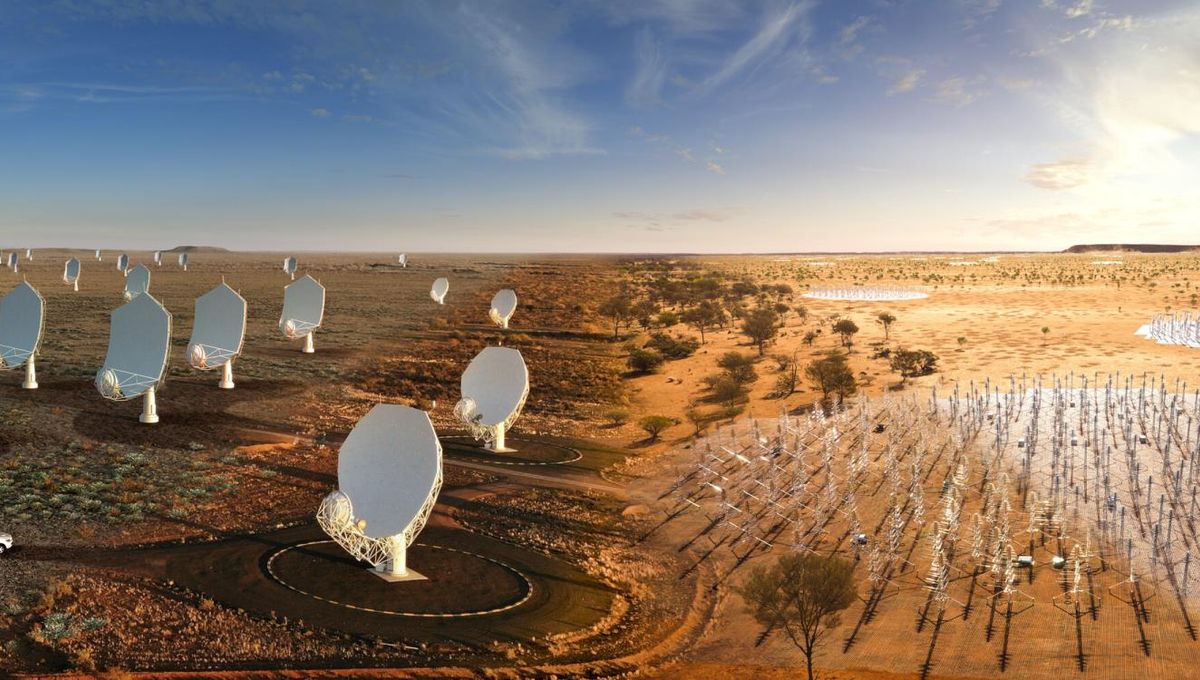
The 2020s are certainly roaring when it comes to astronomy. The launches of JWST and eROSITA have brought incredible new insights into infrared and X-ray astronomy respectively. More revolutionary observatories are coming online soon, such as the Extremely Large Telescope in 2028 and the Square Kilometer Array Observatory (SKAO) in just two years.
SKAO will dramatically expand what we know about the universe in radio waves, bringing forth new discoveries about galaxies, black holes, the universe as a whole, and the search for life beyond Earth. This international collaboration is a megaproject that will see two large observatories built in South Africa and Australia.
It covers everything from how the Universe began to how galaxies form and evolve
Dr Wendy Williams
IFLScience visited the South African site, which is growing from the already revolutionary MeerKAT telescope. Called SKA-Mid, the observatory is in a radio quiet zone, where no artificial radio emission of any kind is allowed. With our phones turned off and packed in special protective bags, we saw the construction at hand, glimpsing at the future of this extraordinary instrument.
It will be composed of 197 steerable antennae, with the maximum distance between two of them being 150 kilometers (93 miles). The new radio dishes are a bit larger than the original ones from MeerKAT, measuring 15 meters (49 feet) across. They are each made of 66 individual panels aligned with such precision (with an average surface accuracy between 0.010 and 0.030mm) to create an incredibly smooth collecting surface. That’s thinner than a human hair!
In Australia, SKA-Low will instead have 131,072 antennae, each about 2 meters (6.6 feet) tall, that look a bit like Christmas trees. The wire antennae look dramatically different from the traditional radio dishes, but they are more efficient at observing lower radio frequencies. These antennae will see all the observable sky at once. Clever data analysis will deliver phenomenal observations from both sites – there is going to be a lot of new science.
“It covers everything from how the Universe began to how galaxies form and evolve,” Dr Wendy Williams, a project scientist working for SKAO, told IFLScience. “What I’m particularly excited about is the ability to map large areas of the sky with the instruments, both [SKA-]Low and Mid; map out how many galaxies are there, how many supermassive black holes are there, and see how these processes evolve and change with time.”
With so many antennae performing these high-quality observations, both observatories will be delivering an extraordinary amount of data. For example, SKA-Low will transmit data at 7.2 terabits per second, thousands of times faster than high-end commercial transmission. And it is necessary.
“Even with the current Pathfinder telescopes 3 seconds of our data is 10 percent of the whole internet’s annual network data rate so that’s how much data we’re processing every second,” Former Science Team Member Dr Hao “Harry” Qiu, explained further. “With the SKAO we need to find smarter ways to deal with data and this will pass on in information technology to all kinds of other fields.”
The SKAO first light is expected in 2027. Construction at both sites is ramping up, ready to give humanity an incredible new way to study the cosmos.
Source Link: The SKA Observatory Is Set To Revolutionize Astronomy – We Visited For A Glimpse Into The Future